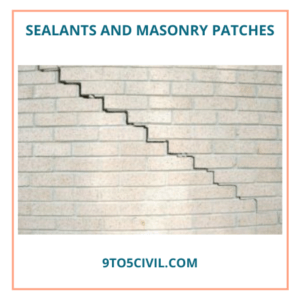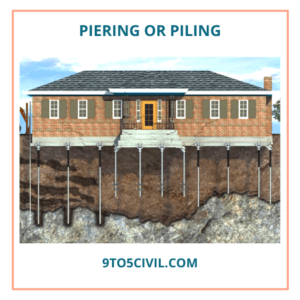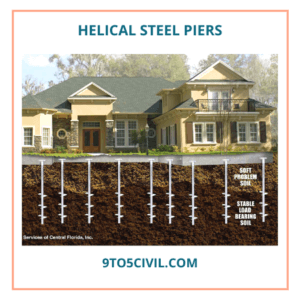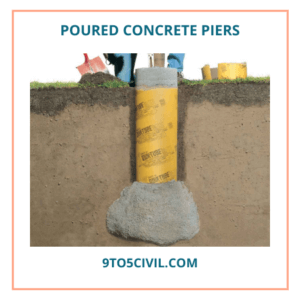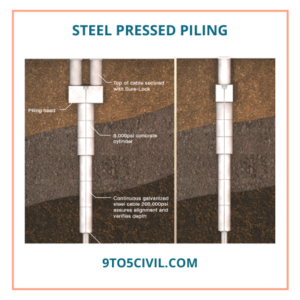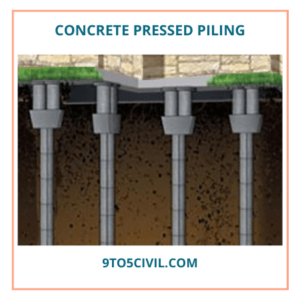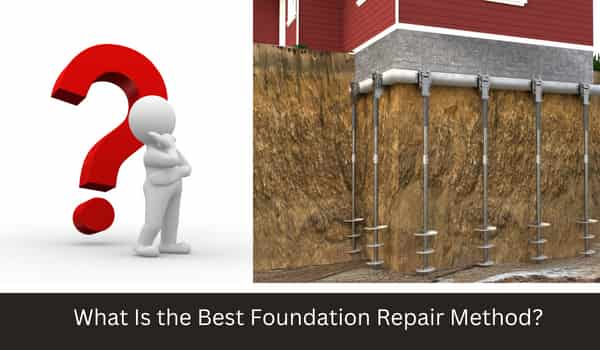
What Is the Best Foundation Repair Method?
Foundation repairs are damaged in foundations built for any home, building, or structure. It requires foundation repairs for the stability of the building structure. The foundation needs to be repaired when the base of the building is damaged or if the concrete is in trouble.
Foundation repair method is stabilizing any building or structure beyond its original level. Foundation settling is the vertical movement in the wall of the foundation supporting the structure.
When the foundation of the structure of the house is damaged in any way due to the movement of the ground, its signs appear around the structure.
Based on these signs, it becomes necessary to carry out house foundation repair and timely repair of the foundation. But when these compromises are unequal or extreme, the problems get worse.
When you find signs of some damage to the structure around your home, there may be fundamental problems with the structure based on this evidence.
It is important to understand the problems of the type of deep foundation of the building and take proper care of it before the service of the structure is damaged. Various foundation repair techniques are available to solve this problem.
Signs of Foundation Problem
The following are some warning signs regarding the foundation. The problem with the foundation of the building structure indicates the need to use the method of foundation repair.
Exterior Warning Signs
- Cracked bricks
- Separation around garage door, window, or walls
- Wall rotation
- Broken or cracked foundation
- Displaced moldings
Interior Warning Signs
- Uneven floors
- Door frame/window frame separation from brick
- Cracks in the floor
- Cracked sheetrock
The low bearing capacity in some areas leads to a difficult situation for the foundation for the building—more damage to the foundation of the building, especially in coastal areas. Houses built in these regions are at greater risk for foundation damage.
When a foundation is formed for a building in the unstable ground, the foundation of the building is also moved due to the movement in such soil.
The foundation repair method used to improve the foundation for any foundation depends on the type of soil, climate, foundation build, and any other problem. Cracks in houses are often vertical or diagonal. These cracks usually arise due to the expansion and contraction of the foundation concrete.
The cracks in the structural element are horizontal, which is produced due to Soil settlement. About fifty percent of the houses built on extended soil suffer from basic ailments—the risk of damage increases when only one part of the foundation is stressed.
Common Types of Foundation Repairs
- Foundation Underpinning/Piering Settling and sinking foundation
- Foundation Jacking Settling
- Foundation Stabilization
- Foundation Sealing
9 Foundation Repair Methods
Different Types of foundation repair methods list :
1. Sealants and Masonry Patches
This can be done by patching the cracks in the foundation of any building. Or the foundation can be repaired by covering the crack with a waterproof masonry sealer. Any building has stability through the foundation. So spotting and repairing cracks becomes very important.
Sealers commonly used for small cracks in buildings include hydraulic cement, vinyl concrete, epoxy, silicone, or polyurethane. The type of mix for different foundation repairs depends on the depth of the crack in the building. This technique is an important method of improving the foundation of a home.
Regular maintenance is done by treating small or insignificant cracks with masonry patches or sealants.
The crack in the foundation is only suitable for small cracks in the masonry using chipping and sealers. Identify the problem as soon as possible to prevent further damage to the foundation from water intrusion.
2. Mud Jacking
Mud jacking is a process done to improve the foundation. Over time, slab sinks are more likely to damage houses or a structural element built on floating concrete. This can definitely cause damage to the base. And the stability of the building is likely to be damaged.
Mudjacking is used to lift a concrete slab that is unevenly settled under the concrete slab to prevent the slab from sinking. The process of mud jacking is also known as slab jacking, concrete lifting, and slab leveling.
The mud jacking method is suitable for use in small jobs like porches, steps, decks, walkways, garage floors, etc.
Slab foundation sinking or tilt action in any building can be caused by empty space under the slab.
This type of method to lift the concrete foundation is done by drilling 2 holes in the sink spaces. Is injected through a hole in the empty space using natural elements. The tilted slab returns to its original position as the solution expands beneath it.
The foundation is repaired by polyurethane injection in an alternative slab jacking method. Like the slab jacking process, polyurethane is used to fill voids, which are injected through holes in the concrete. The polyurethane material used in this type of method is a dense and lightweight material.
These two slab-lifting methods work similarly for smaller projects. However, these two slab lifting methods have to be repeated every few years. This is because new compaction of the new soil beneath the slab is likely to cause sink. In addition, materials such as polyurethane are lighter and last longer. But this procedure is not widely used.
Advantages of Mud Jacking
- This method can be used for any weather conditions.
- Using slab jacking takes less time work.
- Slab jacking costs are lower when comparing a new structure by breaking down the whole structure.
- Using this type of method will not change any color in the structure of the building as the new concrete mix is spread.
- This type of method does not require cleaning the space because this method is simple when the rest is compared.
3. Piering or Piling
The foundation is usually reinstated using the piercing or piling technique. Steel or concrete piers are used to install this foundation. But there is a minor difference between piercing and piling houses.
Piering is made by digging at ground level, while piling is made by driving piles on the ground.
The following are some examples of pilings commonly used for home repairs.
Concrete piers, steel-pressed pilings, bell-bottom piers, etc.
This method provides long-term solutions to the problems of the foundation. This method is a better choice than slab jacking to better job the foundation of the house back to its original condition.
4. Helical Steel Piers
These helical piers are known as anchor piers. Helical steel piers are commonly used to repair lightweight concrete slab foundations and beam foundations. Helical piers are used in the construction of new foundations.
These piles are threaded into the ground to transfer the pre-determined load of the building to the ground, and the weight of the structure is transferred to the load-bearing soil by the piles.
5. Poured Concrete Piers
In this foundation repair method, concrete piers are driven into the ground to a depth of about 10 feet for repair in a residential building. After concreting, it is necessary to cure for about 7 to 10 days to get strength.
Poured concrete piers require more time for installation. Its elements are already precast in precast concrete piers, which speeds up the installation time.
6. Belled Concrete Piers
Bell bottom concrete piers are similar to the process of installing poured/drilled concrete piers.
These types of piers have a foot shape at the bottom. Which is built by Pier to support the building over a wide area.
Bell bottom piers are formed by pouring concrete by placing steel in an excavated hole.
Advantages of Belled Concrete Piers
- Strength can be increased by placing reinforcement in Belled Concrete Piers.
- Belled Concrete Piers protect the foundation from unwanted movements within the ground level.
Also Read : What Is Concrete Mix Ratio? | Type of Concrete Mix Ratio | Factor Affecting of Concrete Mix Ratio
7. Steel Pressed Piling
Steel-pressed piles are widely used for permanent house foundation repair.
Steel piers are capable of a depth of 100 feet to provide stability to the foundation of the house. The use of steel piers is capable of driving to a depth of hard rock.
Advantages of Steel Pressed Piling
- Steel piers can be firmly attached to the ground to a greater depth as required.
- This type of piers is more resistant to heavyweights than concrete piers.
8. Concrete Pressed Piling
Pressed concrete pilings are used for interior and exterior repairs of the foundation. Which is more used for foundation repair and durable foundation. Its use works effectively as a pier.
Properly installed on the ground up to a depth of about 12 feet to achieve the stability of the house.
Holes are made in the structure at sufficient depth. Concrete is then placed by placing reinforcement in the hole. Sometimes precast concrete piles are used for foundation repair.
9. Soil Modification in Foundation
Soil modification makes the soil hard and stable. In this process, some chemicals are filled in the voids inside the soil layers.
This process is similar to slab jacking. Many users need a trained guide to use this method. This process also increases the cost of work and maintenance.
This method is the quickest response to soil improvement in home foundation repair methods. In addition, this method is also an environmentally friendly method.
Like this post? Share it with your friends!
Suggested Read –
- How to Build a Pier and Beam Foundation | Pier and Beam Foundation Repair
- 3 Types of Porch Foundations | Porch Foundation Options | How to Fix Porch Foundation?
- What Is a Stem Wall Foundation? | Monolithic Slab Vs Stem Wall | How Much Does a Stem Wall Foundation Cost?
- What Is Foundation Failure? | Signs of Foundation Issues
- Mat Foundation | Mat Slab Foundation | Types of Mat Foundation
- How to Build a Crawl Space Foundation? | Complete Guide
- Rubble Trench Foundation | What Is Rubble Trench Foundation? | How to Build a Rubble Trench Foundation?
- What Is Pier Foundation? | How to Build a Pier Foundation? | What Is a Concrete Pier Foundation?
- Driven Pile | Driven Pile Foundation (Complete Guide)
- What Is Well Foundation? | Shapes of Well Foundation
- Monolithic Slab | Monolithic Slab Foundation | Monolithic Concrete Slab | Monolithic Slab Cost
- Caisson Foundation | Pneumatic Caisson | Drilled Caissons | Caisson Construction
Frequently Asked Questions (FAQ)
What Is the Best Foundation Repair Method?
- Sealants and Masonry Patches
- Mud Jacking
- Piering or Piling
- Helical Steel Piers
- Poured Concrete Piers
- Belled Concrete Piers
- Steel Pressed Piling
- Concrete Pressed Piling
- Soil Modification in Foundation
House Foundation Repair Techniques
- Polyurethane Foam Jacking.
- Steel Piers.
- Concrete Pressed Piling.
- Helical Piers.
- Concrete Piers.
- Slabjacking/Mudjacking.
Foundation Repair Company
list of Foundation Repair Company
- AFS Foundation & Waterproofing Specialists
- Olshan foundation
- Ram Jack’s foundation repair services
- Alpha Foundations
Foundation Repair Cost
Minor foundation crack repairs can cost up to 20 620 or more. Similarly, major repairs that require hydraulic poles can cost from $ 10,000 to $ 15,000.
How Much Does Foundation Repair Cost?
Foundation Repair Cost between $2,000 and $7,500, with a national average of $4,500. You may be able to have very small cracks filled with epoxy for a few hundred dollars, but severe foundation problems can run you up to $15,000 to $25,000.
House Foundation Repair
Different Types of foundation repair methods list :
1. Sealants and Masonry Patches
2. Mud Jacking
3. Piering or Piling
4. Soil Modification in Foundation.
 Skip to content
Skip to content 